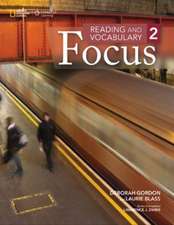Ants At Work: How An Insect Society Is Organized: Insecte
Autor Deborah Gordonen Limba Engleză Paperback – 6 aug 2011
Based on the author's seventeen years of research on harvester ants in the Arizona desert, Ants at Work overturns all standard ideas of insect society hierarchy. Gordon shows that an ant colony operates without any central control and that no ant has power over another. Yet the ant colony, harmoniously performs extremely complex tasks; including nest building, navigation, foraging, food storage, tending the young, garbage collection, and on occasion, even war. She shows that there are no territorial borders in the way we understand them because ants are always ready to change. Ants also switch from one task to another, which undermines the standard view that insect societies are run on a caste system. Gordon explores how ants use simple, local information to make the decisions that generate the complex behavior of colonies. New colonies are born, struggle to occupy a foraging area, grow larger, start to reproduce, and then settle in among their lifelong neighbors.
Superb drawings of ants and maps directly from Gordon's field notes enrich the experience of reading this breakthrough work. In these maps we discover what ants do when a neighboring colony disappears behind an enclosure and what they do when their neighbors suddenly reappear. We see where different tasks of ant daily life are performed. Through Gordon's wry sense of humor and lucid voice, we experience the delights and frustrations of spending blistering days in the desert between the Chiricahua and Peloncillo mountains of Arizona, pursuing the mystery of the fascinating behavior of Pogonomyrmex.
By focusing on chaotic patterns of behavior instead of searching for fixed universal laws, Gordon signals the future of scientific investigation. She boldly contends that ant communication is a model of how brains, immune systems, and the natural world as a whole organize themselves. Her discoveries have profound implications for anyone who is interested in how organizations work, from biologists and physicists to business leaders and pioneers of cyberspace. Ants at Work brings to the natural world the insights of a new era in the science of life.
Preț: 95.24 lei
Nou
18.23€ • 18.96$ • 15.05£
Carte disponibilă
Livrare economică 24 martie-07 aprilie
Specificații
ISBN-10: 1451665709
Pagini: 192
Dimensiuni: 140 x 216 x 28 mm
Greutate: 0.2 kg
Editura: Free Press
Colecția Free Press
Seria Insecte
Notă biografică
Deborah M. Gordon, Ph.D., studied at Oberlin College, Stanford University, and Duke University, and researched at Harvard University and the University of Oxford before joining the faculty at Stanford, where she is Associate Professor of Biological Sciences. She lives in Redwood City, California.
Cuprins
Contents
Introduction
1 The rhythms of the landscape
2 The growth of an ant society
3 Food and the foreign relations of ant societies
4 A forest of ant colonies
5 In the society of ants
6 Networks of ant paths
7 Success without management
8 Complex systems
Epilogue: Lessons from the ants
Notes
Index
Extras
Red ant or ant of red abdomen
It is somewhat average in size, a little firm, a little hard, ruddy. It has a heap of sand, a mound of sand, a hill. It sweeps, makes itself sand heaps, makes wide roads, makes itself a home. It is the worst one to bite, if it bites the foot [the effect] extends to the groin; if it bites the hand, it extends to the armpit; it swells.
The Florentine Codex: Fray Bernardino de Sahagun,
General History of the Things of New Spain, 1590.
[Translation of Aztec description of the red harvester ant.]
25 acres
I study the ants at the side of a rough paved road that runs through a flat valley between the Chiricahua and Peloncillo mountains at the state line of Arizona and New Mexico. An enormous sky surrounds an endless reach of land. The Chiricahuas, to the west, are so close one can see the patches of rock change color during the day. The Peloncillos, to the east and north, form a jagged outline in the distance. To the south the desert stretches across the eighty miles to Mexico.
I stay at the Southwestern Research Station up in the Chiricahua mountains. The station belongs to the American Museum of Natural History in New York. At the peak of the summer season there might be fifty people staying there, mostly undergraduates who come to work either for the station or as research assistants for people like me. We get up at 4:30, when it is still dark, and meet in the dining room, where I usually wake myself up by industrious chewing of my Grape-Nuts. Then there is some antlike milling around while people make their peanut-butter-and-jelly sandwiches to get them through the morning, collect their water bottles and clipboards, and pile into the van. It's about a twenty-minute drive down into the desert. When I first came to work at SWRS, as a graduate student and then as a postdoctoral researcher, I rented cars, eventually moving from the aptly named Rent-a-Wreck to small rental cars that look embarrassed when covered with dust and turn out to have spare tires the size of a doughnut. But when I joined the faculty at Stanford, the university bought a huge air-conditioned van for the purposes of ant research, so we bump down the dirt road from the station in great style. Along the road I can usually avoid the rabbits that seem to throw themselves at the wheels of our van. Down in the flats, as I turn the corner at the Arizona-New Mexico state line, I adjust the visor to block the sharp glow of the rising sun.
You can recognize an ant researcher by looking at her ankles: We wear our socks over the cuffs of our pants. Experience with stinging ants teaches that you can see them on your hands, and feel them go down the back of your neck, but they can get up inside your pants faster than you can brush them off. However, in the desert, keeping off the sun is more difficult than keeping off the ants. Some people wear shorts, at least until they have been stung. Over the years I have evolved a costume that includes a long-sleeved shirt, a cap with a kind of curtain around its lower edge, and the largest sunglasses I can find. I look rather like an insect myself.
For the first few years my assistant and guide was Kristin Roth, who grew up at the station while her father was its director. Kristin taught me to distinguish landmarks in the desert. At first everything looked alike, and I could walk a hundred yards and have no idea how far I'd come. Kristin would stride past me in her cowboy boots, saying "Colony 81? It's right by that little bush over there." Since then, one to five students each year have come out to Arizona to work with me. Some love the desert; one year they happily played Frisbee with cow pies. Some are fascinated by ecology, enough to go on to graduate school. A few have been hooked for life on ants. Unfortunately, some discover that waking up at 4:30 a.m. to follow ants around and slowly roast is not their idea of fun. I do my best to warn everyone ahead of time that ant-watching in the desert is hard work, so anyone brave enough to come with me in the first place tends to stick it out.
The 25 acres I have inspected inch by inch, for the past seventeen summers, is part of a 7,000-acre cattle ranch. When I first saw the site in July 1981, it looked like an Alpine meadow, filled with a stunning variety of flowers. The land was owned by a rancher who fenced off areas of a few hundred acres each and rotated the cattle from one paddock to another. The profusion of flowers was the result of a few wet summers and a few years without cattle. In the late eighties the land was sold to another rancher who took down all the fences and stopped rotating the cattle. Because of heavy grazing and some dry summers, the site now looks very different from the flowery meadow of 1981. Much of the ground is bare, and only the toughest shrubs that cattle cannot eat survive: snakeweed (Guttieriza), Mormon tea (Ephedra), and acacia.
It rains in the spring and then more fiercely in July and August, when monsoon storms bring a few weeks of heavy rains, flash floods, and then, overnight, the first sprouts of green grass. In 1996 large areas of the site were underwater for a week after the heaviest rain, and then came a carpet of green grass. Some of the flowers returned, annuals whose seeds had waited out the many dry years since the early eighties.
On the first day there every summer, I park the van, get out, and walk on to the site with great relief and exhilaration; relief because once again the ants are still there -- no one has bought the land and built a convenience store on it; exhilaration at the prospect of shifting down from the human to the ant scale, from large to small and from the slow, emphatic tuba notes of human affairs to the light harpsichord trills of ant life. The ants are so busy; their business is so complicated; and on this little patch of desert they play out a perpetual rich drama, oblivious to all the other dramas that occupied me for the rest of the year. I discover again my irrelevance to the ants.
The Ants
The ants begin to come out at sunrise and stay out until about 11, when it gets so hot that they go back into their nests. Early in the morning we hear the calls of coyotes and the songs of desert larks. We see the occasional tarantula out for a morning walk along the warm asphalt road and, rarely, a rattlesnake too full and lazy to go back into its nest after a large nocturnal meal. Here and there is a collapsed kangaroo-rat mound; a few contain live rats, and recently ground squirrels have moved into some of the abandoned mounds. After rain the dung beetles earnestly roll their balls of cow dung much larger than themselves. Shiny black bombardier beetles point their rear ends in the air and threaten to spray acetic acid. The harlequin grasshopper has a red, blue, yellow, and green costume so much more like the cover of the Sgt. Pepper's Lonely Hearts Club Band album than real life that when I first saw it I did not believe my eyes. The whiptail (Cnemidophorous) lizards undulate from the cover of one bush to another, offering brief flashes of their blue bellies, working up to the frenzy of the midday heat when they rush about so fast their tails don't touch the ground. Sometimes a desert tortoise walks by. For several summers an old jackrabbit came out from behind the same bush every few days to watch me, but he or she eventually disappeared, and the ones I have seen since are more reserved.
On the human scale, the site looks like a plain of chaparral scrub with mountains on either side. On the ant-colony scale, the site looks like a bumpy, sandy surface with lots of gray, orange, and pink boulders and the occasional bush or plant. By the time it gets warm, about 7:30 in the morning, the ground quietly teems with harvester ants. They are called harvester ants because they eat mostly seeds, which they store inside their nests. They will happily take termites as well when they can find them.
There is a nest of the red harvester ant (Pogonomyrmex barbatus) every few yards. Young harvester ant colonies often start out with nests under bushes; eventually they destroy the bush roots as the nest expands underground, leaving an open space by the time the colony is four or five years old. An old, established colony may have a flat disk or mound a meter wide, covered with tiny pebbles, with one or two entrances in the middle. Colonies live for fifteen to twenty years, and most colonies stay in the same nest all their lives.
Harvester ants of this species are large (about 1 centimeter long) and brown. They have big heads that make them appear to jostle along as they walk. The back end does the propulsion and at every step pushes the heavy head forward with a little bump. The ants are sedate, even plodding. They spill out of the nest in the morning like elderly tourists pouring out by the busload. There are many species of Pogonomyrmex in the deserts of the southwestern United States and northern Mexico, and they are all known for their powerful sting, which they use to defend themselves against other ants and careless humans. Perhaps because their potent venom makes aggression unnecessary, they will rarely attack, and they tend to avoid confrontation.
As many as fifty other ant species may live on the site. The relations between red harvester ants and the other ant species sometimes get nasty, but never escalate into military raids. I have never seen a red harvester ant enter the nest of another species, except for foragers that soon hurry back out apparently embarrassed by their mistake; and I have never seen ants of any other colony, same or different species, raid a red harvester ant nest. Fighting does sometimes break out between colonies of red harvester ants, and we shall see how neighbors of this species work out their differences.
My view of the other ant species at the site is Pogo-centric, in that I think of them as belonging to three categories: other harvester ant species in the genus Pogonomyrmex, other big ants, and little ants. The differences in size may not matter as much to the ants as they do to me; my categories reflect how well I can see them. I think of an ant as a big one if it is large enough for me to see its separate parts and how they move; then it looks to me like an animal doing something. Ants that are smaller than about half a centimeter look to me like straight lines with antennae. Many species of tiny ants have been studied in the laboratory under a dissecting microscope, but I prefer to watch animals I can see without having to fiddle with any equipment. This might be why I do not study bird behavior, a field that requires skill with binoculars. It is certainly one of the reasons I chose to work on harvester ants in the desert: large brown ants on pale yellow sandy soil are easy to see.
Ants of the species I study, red harvester ants, are the largest of the Pogonomyrmex species at the site. Another species that like this one has large ants and large colonies, P. rugosus, tends not to overlap in range with P. barbatus. There is a patch of P. rugosus colonies on the other side of the road, and there was one colony in my study site for a few years, but it died. The other four Pogonomyrmex species at the site have ants smaller than those of P. barbatus; of these, the ants of P. maricopa are largest. They tend to be active later in the day than the ants of P. barbatus, as they can tolerate higher temperatures. P. maricopa colonies build crescent-shaped nests, and I think they may move their nests every few weeks during the summer rains. Two other species, P. californicus and P. desertorum, have much smaller workers and smaller colonies than P. barbatus. P. desertorum ants are rather timid. Ants of the last species, recently transferred to the genus Ephebomyrmex, are minuscule versions of P. barbatus ants, and live in tiny, practically invisible nests with strange workerlike queens. If the latter three species (P. desertorum, P. californicus and E. imberbiculus) did not have the special distinction of being in the genus Pogonomyrmex, I would group them with the little ants.
Of the other big ants, the species most important to the red harvester ants at this site is probably Aphaenogaster cockerelli, who eats seeds as the Pogonomyrmex do, but also eats insects. The Aphaenogaster are large, quick, graceful ants that can run circles around a red harvester ant worker, and often do. A. cockerelli are active at night and cannot tolerate high temperatures, so they interact directly with red harvester ants only early in the morning and on cool, overcast days. Sometimes ants of both species find an appealing dead insect, and then they will fight. A red harvester ant has its strong venom, while an Aphaenogaster has no sting at all, but the Aphaenogaster are so much quicker and more aggressive that they tend to win disputes. They also carry out the nefarious practice of blocking up the nest entrances of neighboring red harvester ant colonies at night. This means that only the late morning light reaches inside the red harvester ant nest, so the harvester ants come out later to forage. Because harvester ants must return to their nests once the midday sun raises the soil temperature above about 52 degrees C., a late start shortens their daily foraging period, leaving more food for the Aphaenogaster when they come out again that night.
The other big ants are the honeypot ants, Myrmecocystus, which eat mostly insects and other arthropods, and inside the nest store food as a sugary liquid inside the swollen abdomens of workers, thus earning the name "honeypots." One species, M. mimicus, is very common in some years, and in those years can be quite annoying to the harvester ants. The Myrmecocystus tolerate higher temperatures than red harvester ants so they tend to be active at midday, at the end of the red harvester ant foraging period. They come in waves and run around in circles on the harvester ant mounds, upsetting the foragers heading back into the nest with their loads. The honeypot ants may sometimes induce a harvester ant forager to drop its load, but more often the honeypot ants just seem to be making a nuisance of themselves for no immediate reward. A second honeypot species, Myrmecocystus mexicanus, a ghostly yellow nocturnal ant, is extremely rare at the site.
The abundant species in the "little ant" category include the small army ant, Neivamyrmex nigrescens. When on the move they raid the nests of other ants, spinning a branching network of curved trails across the desert, but they do not raid Pogonomyrmex nests, probably deterred by Pogonomyrmex venom. There are the little seed harvesters Pheidole militicida and Pheidole desertorum; the omnipresent Forelius, a tiny, pesky red ant; and Solenopsis xyloni, a close relation of the fire ant. The seed-eaters among these seem to collect seeds smaller than the ones used by the Pogonomyrmex barbatus. Occasionally a Pheidole colony builds a nest at the edge of a red harvester ant mound, and the red harvesters just ignore them. The Pheidole move quite frequently, and given the fifteen years a red harvester ant colony occupies its mound, maybe a brief incursion by a Pheidole colony is not worth bothering with.
The red harvester ants usually appear quite unconcerned with this tapestry of ant activity, and I will not discuss it further, except to say that we are now beginning to study some other ant species to find how they matter to red harvester ants.
Other colonies of the same species are, however, very important. Standing at a red harvester ant mound, looking around the neighborhood, you may see three or four other red harvester colonies nearby. The foragers travel away from the nest to search for seeds, and they may run into the foragers of a neighboring harvester ant colony. When ants of different colonies meet, they usually touch antennae and continue searching the ground for seeds.
To understand the dialogue between neighboring colonies we must consider the colony life cycle, the invisible underground part of the nest, and the daily round of work outside the nest. The internal organization of a colony determines how it grows and how it uses the space around the nest to collect food. This is the link between the network of interactions among ants inside their own nest, and the network of relations among neighboring colonies. Colonies send ants out to collect food, which is used to make more ants, who then go out and use more foraging space. The pattern of colonies in the landscape is generated by the work of ants deep underground.
Copyright © 1999 by Deborah M. Gordon
Descriere
A scientific tour de force, Deborah Gordon's Ants at Work takes us to the amazing world of an ant society and reveals a new and original understanding of how these tiny animals get the work of the colony done. Gordon's surprising and deceptively simple message that the queen is not in charge represents a fundamental shift in modern biology. It is no less than a revolution in our thinking on the mystery of natural organization.
Based on the author's seventeen years of research on harvester ants in the Arizona desert, Ants at Work overturns all standard ideas of insect society hierarchy. Gordon shows that an ant colony operates without any central control and that no ant has power over another. Yet the ant colony, harmoniously performs extremely complex tasks; including nest building, navigation, foraging, food storage, tending the young, garbage collection, and on occasion, even war. She shows that there are no territorial borders in the way we understand them because ants are always ready to change. Ants also switch from one task to another, which undermines the standard view that insect societies are run on a caste system. Gordon explores how ants use simple, local information to make the decisions that generate the complex behavior of colonies. New colonies are born, struggle to occupy a foraging area, grow larger, start to reproduce, and then settle in among their lifelong neighbors.
Superb drawings of ants and maps directly from Gordon's field notes enrich the experience of reading this breakthrough work. In these maps we discover what ants do when a neighboring colony disappears behind an enclosure and what they do when their neighbors suddenly reappear. We see where different tasks of ant daily life are performed. Through Gordon's wry sense of humor and lucid voice, we experience the delights and frustrations of spending blistering days in the desert between the Chiricahua and Peloncillo mountains of Arizona, pursuing the mystery of the fascinating behavior of Pogonomyrmex.
By focusing on chaotic patterns of behavior instead of searching for fixed universal laws, Gordon signals the future of scientific investigation. She boldly contends that ant communication is a model of how brains, immune systems, and the natural world as a whole organize themselves. Her discoveries have profound implications for anyone who is interested in how organizations work, from biologists and physicists to business leaders and pioneers of cyberspace. Ants at Work brings to the natural world the insights of a new era in the science of life.


























